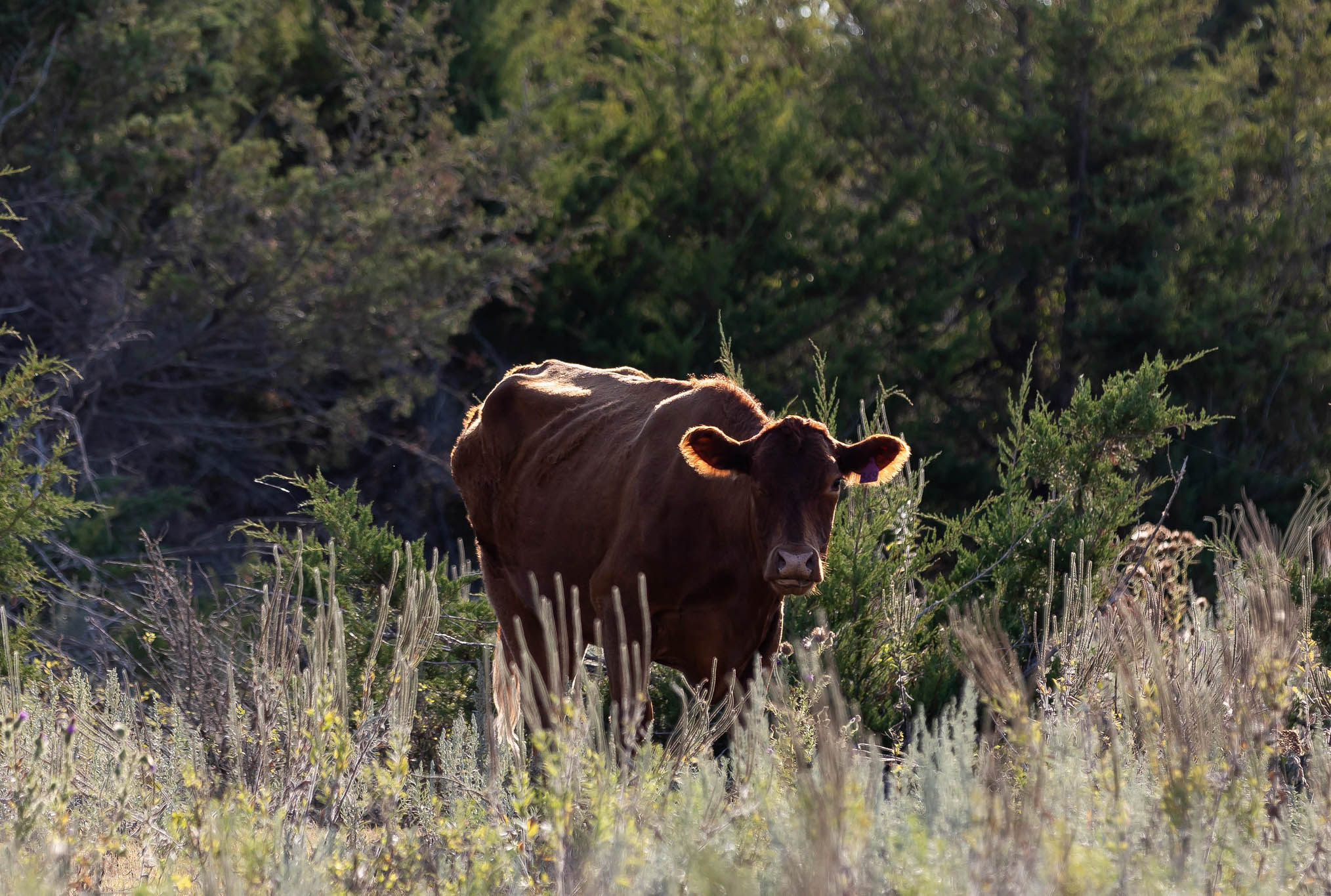
Older cattle are more susceptible to anemia caused by anaplasmosis. | Download this photo.
Cattle Chat: Managing tick-related sickness in the herd
K-State cattle experts discuss what to expect if anaplasmosis is identified in the area
Oct. 24, 2023
By Lisa Moser, K-State Research and Extension news service
MANHATTAN, Kan. — When hiking, many know to check their bodies for ticks to avoid getting Lyme disease or Rocky Mountain spotted fever. Many of these tick diseases are region-specific.
In the same way, ticks can also carry diseases that make animals sick, said the veterinarians at Kansas State University’s Beef Cattle Institute.
Speaking on a recent Cattle Chat podcast, K-State veterinarian Brad White said anaplasmosis is a blood-borne pathogen carried primarily by ticks and can impact cattle in certain regions of the country.
“Because it is a blood-borne pathogen, cattle with anaplasmosis become anemic and that can lead to spontaneous abortions and in some cases, death,” White said.
K-State veterinarian Brian Lubbers said this disease often impacts a certain group of cows the most.“Anaplasmosis typically impacts the older cows the hardest because they have a harder time with the anemia,” he said.
With anemia, the first sign is often that cattle hold their heads down and act depressed, according to White. Spontaneous abortions can also be a sign that anaplasmosis is impacting the herd, he said.
“The abortions are related to the cattle getting sick systemically, meaning they get the disease and become sick enough that they can’t maintain the pregnancy,” White said.
If anaplasmosis is suspected in the herd, Lubbers said it is important to test the sick animals for an accurate diagnosis. He said that with a blood sample, veterinarians have three ways to confirm the presence of it in the herd.
“We can test the blood sample by looking for parasites on the blood cells, but that doesn’t typically show up until the cattle are clinically sick,” Lubbers said. “Other options are a PCR test where we look at the parasite's DNA, or a serology test where we look for antibodies in the blood, which would indicate exposure to the disease.”
If the disease is suspected, the sick animals are typically treated with tetracycline antibiotics, Lubbers said.
Not all herds will come in contact with ticks that carry anaplasmosis, said K-State veterinarian Bob Larson.
“This disease does have a geographic component to it, and the longer the disease is in the area the magnitude of the harm will decrease because the herd will build stability over time,” he said.
He also said that fall is the time of year when cases will peak in the Midwest.
“We tend to see peak cases a few weeks after the tick populations are at their highest, so that means September through November is often when the cattle show sickness,” Larson said.
White agreed, adding: “The delay of sickness results from the time it takes from the initial infection until when they show signs of illness from the infected blood cells.”
Because this disease is extremely difficult to keep out of the herd once the carrier ticks arrive in the area, White and the others agree it is important for producers to work with their local veterinarians to come up with a management plan ahead of anaplasmosis infecting the herd.
White said, “There is not a lot producers can do to prevent exposure to anaplasmosis, and so monitoring and control will be important in the management plan for this disease.”
To hear the full discussion, listen to the Cattle Chat podcast online or through your preferred streaming platform.

